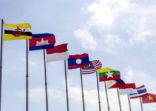Market trends and dynamics in many Asian countries offer good reason for investors to be positive about some of the region’s key equity markets.
“Value names should ride on the macro recovery and higher dividend yields as they emerge,” said Winnie Chiu, senior equity advisor at Indosuez Wealth Management (WM)
Speaking as part of an investment outlook briefing for the second half of 2021, Chiu said she continues to be constructive on Chinese fundamentals and will look to take tactical positions in line with the reflation trade.
At the same time, she is cognizant of not ignoring uncertainty from the possibility of global inflation if central banks run out of stimulus, or from risks such as geopolitical flare-ups or complications in vaccine rollouts.
Equities in Asia Pacific have also hit some roadblocks in recent months. Although they rallied around 13% in the first six weeks of the year, concerns over the potential for rising interest rates erased some of the gains. As a result. since mid-February, the market has been relatively flat, noted Chiu.
However, she added, “so far, the risks look manageable”. Furthermore, regional equities have been revised upwards by 5% this year, and by 4% in 2022, led by optimism for Taiwan and Australia.
Positioning for value in China
There is scope for optimism in China, too. So far this year, China A-shares have been notably weak, hampered by a mix of policy tightening, inflationary fears and worries of internet-related regulatory pressure. As a result, credit growth has slowed.
Retail sales and gross exports are among the areas of the economy to see deceleration. Further, the February unemployment rate in China was higher than many commentators expected.
Yet inflationary pressure remains low and aggressive policy tightening looks unlikely, said Chiu, given the ultimate objective of Chinese policymakers to bring a balance between growth and stability.
In addition, the past decade in China’s stock markets has consistently seen a negative performance in the second quarter of each year. This seasonal pattern then gives way to a rebound in the two successive quarters. While the lull this year has happened in the first quarter, Chiu explained there is no reason to expect anything other than recovery.
“Between value and growth, we expect value to perform better as yield continues its uptrend,” she added. “China is too big for global investors to ignore, despite any short-term hiccups.”
Selective by sector
In terms of individual sectors, Indosuez WM is eyeing some of the biggest growth opportunities within semiconductors, industrials and materials, consumption and healthcare.
“In healthcare, in particular, we have seen higher earnings revisions and the sector has offered outstanding growth for the past two years,” Chiu said.
In China, with its ageing population and rising health insurance, the country’s scale makes domestic healthcare particularly enticing.
Semiconductors, meanwhile, are increasingly critical. “They are strategic resources that all major economies must secure as the backbone of new technologies, such as robotics, autonomous driving and 5G,” Chiu explained.
Since competition will rise for thinner, faster and more powerful semiconductors, companies in this industry appear well-positioned to thrive.
Regional picks
Such demand bodes well for Taiwan and South Korea more broadly, added Chiu, given their prominence in the semiconductor and IT space.
Elsewhere in Asia, prospects for Singapore are also bright, with the city-state expected to leverage its successful containment measures of Covid-19. The office and retail Reits sectors are among those likely to benefit, predicted Chiu.

















